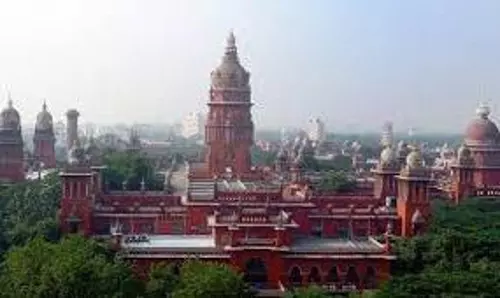
Sundarbans women lead the way in making dairy farms organic
text_fieldsChowrangi (West Bengal): Over 30 women have gathered to deliver milk at a one-room milk collection centre here.
It's a daily rendezvous for this clique belonging to a women-run dairy cooperative in the Sundarbans delta in south Asia that is inching its way to becoming 100 percent organic.
In the bucolic settings of Chowrangi village, these empowered women milk producers, ranging in age from 20 to 80, have now begun to think of themselves as important stakeholders in a potential organic farming-driven rural economy.
As members of the Chowrangi Women Dairy Cooperative Society (CWDCS), they collect milk from native cow breeds, pour them in steel milk cans and diligently present their product at the cooperative's collection centre for testing.
Their vision is climate-resilient agriculture in this disaster-prone delta. Like island nations of Tuvalu, Marshall and Maldives, the Sundarbans archipelago straddling the India-Bangladesh border too faces an intensifying barrage of climate impacts.
"We have been through floods that washed our fields with salt and then came (cyclone) Aila in 2009. Paddy fields sank. Livestock was killed. For years we could not do adequate cultivation due to the salt-encrusted soil. Heavy use of chemical fertilisers and pesticides have further degraded systems. Now rainfall patterns have also changed," said livestock owner Suparna Deb Sharma and chairperson of the CWDCS.
"We don't want to depend on nature so our reliance is on organic farming," she told this visiting Mongabay-India correspondent.
The dominating colour in this countryside is green and blue. Close to three hours away from the state capital Kolkata, the monotone of this verdant landscape is only broken by the rustle of these women's colourful sarees, the meandering red-brown brick-paved paths and the occasional concrete structures. Urbanisation is spreading fast, Suparna Deb Sharma said.
In this climate change hotspot, women have learnt to live on the edge with rising sea levels and salt water intrusion. Globalisation is also making its presence felt.
"We use mobile phones now for our day to day affairs and soon we want to own smartphones. We do know about the demand for organic foods and we want to learn more," she said.
Beaming with pride, Suparna Deb Sharma spoke of "taking matters into our own hands and transforming our systems into organic as it was done traditionally as part of inherited agricultural systems."
Of the 102 islands of the Indian Sundarbans archipelago, Chowrangi lies in Basanti block, one of the better off islands out of the 54 inhabited ones. Women form about 49 percent of the population.
Connected by a highway to Kolkata, Basanti is also the gateway for tourists to the Sundarbans- the world's largest mangrove forests, the lair of the Royal Bengal Tiger. Sonakhali, opposite Basanti, is a popular starting point for Sundarbans steamer and launch trips.
According to Agricultural and Processed Food Products Export Development Authority (APEDA), the total area under organic certification process (registered under the National Programme for Organic Production) is 3.56 million hectare (2017-18).
The DCS is now gunning for organic certification, Deb Sharma informed.
The brand was feted earlier this year by the National Dairy Development Board (NDDB) for its high-quality dairy products. Apart from cow milk and ghee (clarified butter), eggs, honey from the Sundarbans and rice are sold under the aegis of the brand.
Covering 3,500 women farmers, these DCSs record a peak milk procurement of over 4,000 kilograms per day from seven blocks of the Sundarbans and function with NDDB's guidance and technical support.
"Our milk is of high quality. They are from indigenous cows and we do not use antibiotics or hormones. Once we bring the milk to the centre, it is tested for fat content and other parameters. Based on those we get the price," Deb Sharma said.
Donning a blue scrub apron and a hairnet, 31-year-old Madhavi Mriddha Mandal explains the rigorous quality compliance procedure.
"We test a drop of milk from each of the cans. If the fat content is not satisfactory then it is not used by us. Only the best quality milk goes out," Mandal said with a justified gleam in her eyes.
Each days' quantity and quality parameters of the produce is registered digitally and the women members are paid every 10 ten days.
Between them, they manage to pour in about 50 litres of milk each day, chimes in Madhavi. Presently the co-operative has 95 members and depending on the availability of lactating cows and their numbers, 30 to 40 women at a time are active at the co-operative.
The cows are fed organically-grown corn, sorghum and a local variety of grass. The challenge to go 100 percent organic has spurred them to look for a suite of options within nature's toolbox itself.
"For organic milk, the whole cycle of milk production has to be free of chemical fertilisers and pesticides. So we use herbal concoctions as insect repellents. These are also used for veterinary purposes. The herbs come from herbal gardens we grow in our homesteads. Cow dung manure, liquid manure and even vermicompost are used by many," Suparna Deb Sharma said.
















